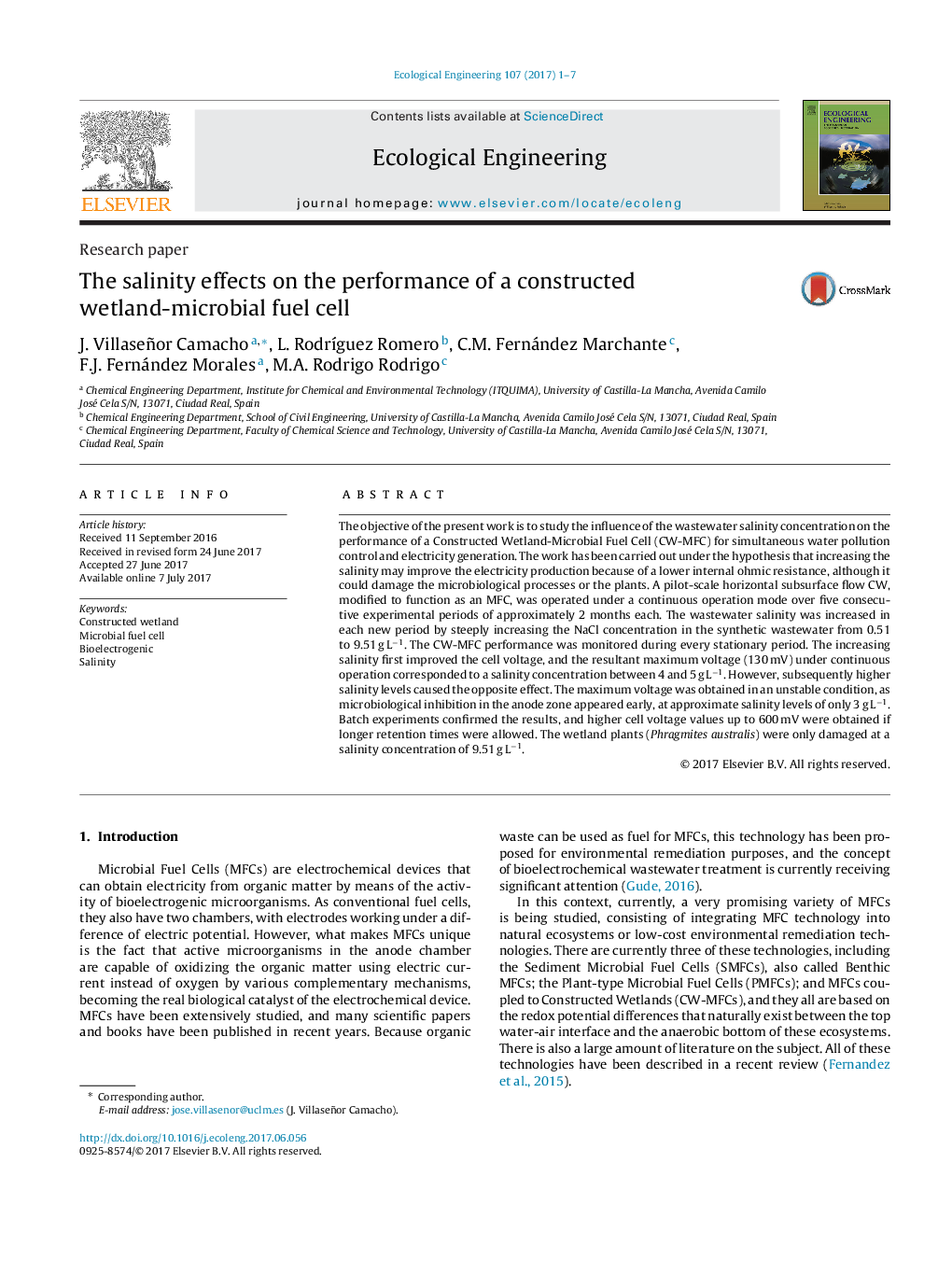| کد مقاله | کد نشریه | سال انتشار | مقاله انگلیسی | نسخه تمام متن |
|---|---|---|---|---|
| 5743655 | 1617995 | 2017 | 7 صفحه PDF | دانلود رایگان |
- CW-MFCs are efficient devices used to treat wastewater and produce electricity.
- Salinity affects the performance of CW-MFCs.
- Microbiological inhibition effects can be observed at a salinity of 3 g Lâ1.
- Increasing salinity improved the cell voltage up to concentrations of 4 and 5 g Lâ1.
- Wetland plants (Phragmites australis) are only damaged at salinities over 9.5 g Lâ1.
The objective of the present work is to study the influence of the wastewater salinity concentration on the performance of a Constructed Wetland-Microbial Fuel Cell (CW-MFC) for simultaneous water pollution control and electricity generation. The work has been carried out under the hypothesis that increasing the salinity may improve the electricity production because of a lower internal ohmic resistance, although it could damage the microbiological processes or the plants. A pilot-scale horizontal subsurface flow CW, modified to function as an MFC, was operated under a continuous operation mode over five consecutive experimental periods of approximately 2 months each. The wastewater salinity was increased in each new period by steeply increasing the NaCl concentration in the synthetic wastewater from 0.51 to 9.51 g Lâ1. The CW-MFC performance was monitored during every stationary period. The increasing salinity first improved the cell voltage, and the resultant maximum voltage (130 mV) under continuous operation corresponded to a salinity concentration between 4 and 5 g Lâ1. However, subsequently higher salinity levels caused the opposite effect. The maximum voltage was obtained in an unstable condition, as microbiological inhibition in the anode zone appeared early, at approximate salinity levels of only 3 g Lâ1. Batch experiments confirmed the results, and higher cell voltage values up to 600 mV were obtained if longer retention times were allowed. The wetland plants (Phragmites australis) were only damaged at a salinity concentration of 9.51 g Lâ1.
150
Journal: Ecological Engineering - Volume 107, October 2017, Pages 1-7
